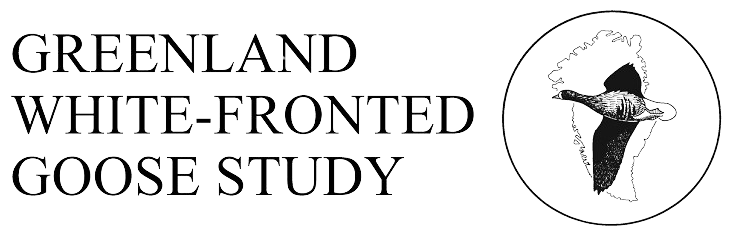History
Although not mentioned by A-W (1963) R&O referred to old reports from the 1950s and early 1960s of up to 20 birds wintering, principally on Muck, but sometimes on Eigg. That publication had no more recent records than that and unfortunately no more historical information has come to light since 1979. No Greenland White-fronted Geese were recorded on BTO Winter Atlas forms from Muck (A. Currie pers. comm.) and none were seen when the island was overflown in April 1983 during the Barnacle Goose survey of that year (M. Ogilvie pers. comm.). We have always found it almost impossible to obtain good coverage of this island and the neighbouring island of Eigg. Both are difficult to access in winter because of ferry times, and it has not been possible to find inhabitants who are willing to look for geese on our behalf. This flock remains the worst covered of those in the United Kingdom because of the challenges posed by accessibility.
Status:
Regional importance (R&O 46). Very difficult to interpret changes in abundance. With such a small home range, it is unlikely this flock has ever shown major fluctuations in numbers, but the lack of counts make trends impossible to estimate. There have been very few counts since 1999 when the population as a whole started to decline. Aerial survey of this and other adjacent sites might be the most realistic option to effective survey of this and other flocks.
Maximum winter counts:
Breeding success: There are no consistent production data from this site.
Feeding sites and habitat: Am Maol is the main feeding site on short maritime grassland turf in the north-east corner of the island, but there are reports from enclosed fields throughout the island, and it seems likely to assume that the geese feed wherever there is suitable foraging habitat, both natural, semi-natural and intensively managed.
Roosting sites: The geese have been sighted flighting to Fionn-aird in the south of the island to roost at night, and piles of roost droppings have been found on the islands of the Central Pond on the island. White-fronted Geese have also been watched flying at dusk to Horse Island off the north-west tip of Muck which may constitute a feeding and roosting site for the flock and add to complications associated with counting.
Habitat change: Much enclosure and agricultural improvement of grassland took place in the 1980s but it is not possible to assess its effects on the geese.
Aircraft disturbance: None known
Hunting disturbance: Not known.
Agricultural disturbance: Not known, but unlikely to be more than in any comparable area of such farmland. The owner has expressed concern about “increasing numbers of geese” on the island, but current flock sizes are unlikely to constitute cause for concern.
Site safeguard: Muck, Eigg and Canna are SSSI
SNH Natural Heritage Zones/Area: Western Seaboard.
Threats: Not known.
Linkages with other sites:
None known.
